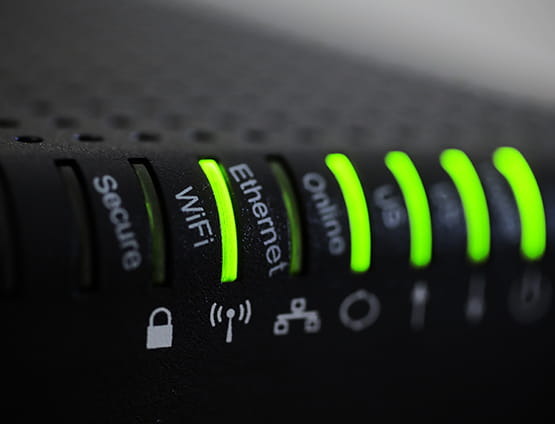Power Integrations v. Fairchild Federal Circuit’s Guidance on the EMVR
Power Integrations v. Fairchild Federal Circuit’s Guidance on the EMVR
The case is another example of how the court handles the application of the Entire Market Value Rule in patent infringement matters.
The concept of apportionment with regard to patent damages arose from the 1884 Supreme Court opinion in Garretson v. Clark, in which the court indicated that a “patentee … must in every case give evidence tending to separate or apportion the defendant’s profits and the patentee’s damages between the patented feature and the unpatented features …”[1] While this ruling rendered the concept of apportionment to be a general requirement, a subsequent exception arose that has become known as the Entire Market Value Rule (EMVR). The EMVR generally allows one to forgo apportionment, permitting the recovery of damages based on the value of a patentee’s entire product/apparatus that contains multiple features if the patent-related feature is shown to be the basis for customer demand.
While the EMVR initially arose from lost profits cases, in recent years it has most commonly been associated with matters involving reasonable royalty damages. Through rulings in various cases, the courts have provided guidance regarding apportionment and use of the EMVR. For example, in Cornell v. HP, former Chief Judge Randall Rader introduced the idea of using the value of the smallest salable patent practicing unit (SSPPU) in determining a royalty base when one could not show that the patented invention drove demand of the entire product.[2] In VirnetX v. Cisco, the Court of Appeals for the Federal Circuit (the “Federal Circuit”) went further, indicating that if the SSPPU involves a multi-component product with noninfringing features, further apportionment is still required, beyond the value of the SSPPU.[3] In LaserDynamics v. Quanta, the Federal Circuit explained that to use the EMVR (and avoid apportionment), it was not enough to show: 1) that a patented invention was essential, or 2) that a product without the invention would be commercially unviable.[4]
In its ruling in Power Integrations v. Fairchild, the Federal Circuit once again provides guidance regarding the use of the EMVR in determining damages in patent infringement matters.
Power Integrations v. Fairchild
Power supplies, such as those used to charge most electronic devices, convert alternating current coming from wall outlets to direct current, the current typically required to operate most electronic devices. Such power supplies use an integrated circuit called a power supply controller to regulate the amount of power being supplied. A switching regulator directs a transistor in the circuit to turn on and off, thereby controlling the electrical output and ensuring the power supply delivers the requisite amount of power.
Power Integrations and Fairchild are both manufacturers of power supply controller chips. On November 4, 2009, Power Integrations filed suit in the Northern District of California alleging patent infringement by Fairchild. The suit was related to two of Power Integrations’ patents, U.S. Patent Nos. 6,212,079 (“the ’079 patent”) and 6,538,908 (“the ’908 patent”). The asserted claims of the ’079 patent pertained to switching regulators. The invention taught by the ’079 patent improved the functionality of power supply controller chips by having the switching regulators reduce the frequency of on/off cycles rather than skipping cycles, which was the method used by prior-art switching regulators. The ’908 patent was directed more broadly to power supply controllers.
During February and March 2014, a trial was held that resulted in a jury finding that Fairchild infringed both patents. The jury awarded $105 million in damages. The court indicated that the jury clearly calculated these damages based on Fairchild’s infringement of the ’079 patent. Because the ’079 patent related to only a particular aspect of the infringing product, an apportioned royalty base was used in the damages calculation, specifically one based on the price of the SSPPU. Six months after the jury verdict, while the case was still pending in district court, the Federal Circuit issued its opinion in the matter of VirnetX v. Cisco. As indicated previously, in VirnetX v. Cisco, the Federal Circuit ruled that using the price of the SSPPU as the royalty base did not necessarily satisfy the apportionment requirement if the SSPPU still contained other noninfringing features. In light of this ruling, the district court ordered a new trial on the issue of damages.
A second trial was held in December 2015. As a result of a successful Daubert challenge, Power Integrations’ damages expert was precluded from offering testimony at trial regarding his apportionment methodology. However, the expert was permitted to provide testimony based on the EMVR. The jury relied upon the expert’s EMVR testimony and, as a result, awarded damages totaling $139.8 million. Fairchild filed a motion for judgment as a matter of law, arguing that the use of the EMVR was improper. The district court denied the motion. This denial was one of the issues included in Fairchild’s appeal to the Federal Circuit.
Was It Appropriate to Use the Entire Market Value Rule?
In assessing the appropriateness of Power Integrations’ use of the EMVR, the Federal Circuit began by reiterating its previous positions, namely that: 1) patentees are required to apportion the royalty down to a reasonable estimate of the value of the claimed technology, and 2) the EMVR is an exception and its use should be strictly limited to ensure that a reasonable royalty is not overreaching and does not encompass other elements not covered by the patent. The Federal Circuit then provided guidance explaining that if the claimed invention does not define the entirety of the commercial product and if the product has other valuable features (patented or unpatented) that also contribute to consumer demand, then damages for patent infringement must be apportioned to reflect only the value of the patented feature. It clarified that if the “other features are simply generic and/or conventional and hence of little distinguishing character, it may be appropriate to use the entire value of the product because the patented feature accounts for almost all of the value of the product as a whole.”[5] However, the fundamental question was whether the accused product, compared with other products in the same field, had features beyond those covered by the patent that would cause consumers to purchase the product.
Power Integrations contended that the frequency reduction technology taught by the ’079 patent drove consumer demand for Fairchild’s controller chips. To support this contention, Power Integrations pointed to evidence that: 1) the technology was essential to many customers in that it allowed products to meet the requirements for the federal government’s Energy Star program, 2) some customers asked for the technology, 3) products with the technology outsold other products, and 4) technical and marketing materials promoted the technology. However, the district court noted that court records contained evidence that the accused products contained other valuable features, too. The district court had specifically indicated this, stating that “there is evidence in the record that other features are important and are highlighted by the respective parties” and that “there is no question that … there are other valuable features.”[6]
Finding that the accused products contained other valuable features, the Federal Circuit indicated that in order to use the EMVR, Power Integrations was required to show that those features were not relevant to consumer purchasing decisions. Power Integrations, however, did not provide any such evidence or testimony. Furthermore, the Federal Circuit pointed out that much of the evidence Power Integrations did rely on concerned its own products. For example, Power Integrations considered the sales of two generations of its controller chips, where the newer one differed only by including the technology taught by the ’079 patent. Power Integrations argued that the patented technology was the reason why customers purchased the new product over the older one. A similar comparison was not made with Fairchild’s products, nor did any comparisons address the other valuable features in Fairchild’s products. Thus, the Federal Circuit vacated the damages award and remanded the matter for a new trial on damages.
Key Takeaways
The Federal Circuit’s ruling in Power Integrations v. Fairchild provides guidance to parties for whom the EMVR may be an issue. The following are key points that damages experts and attorneys should take away from the case:
- Defendants in matters that might involve the EMVR should consider identifying evidence of valuable non-patented features in the accused products.
- A plaintiff wishing to use the EMVR should address any valuable non-patented features identified by defendants and show that they are not relevant to consumer choice.
- In circumstances where non-patented features are generic and/or conventional and offer little to distinguish the product from competing products, it may be appropriate to use the entire value of the product because the patented feature accounts for almost all of the value of the product.
- Garretson v. Clark et al., 111 U.S. 120, 4 S. Ct. 291 (1884).
- Cornell University v. Hewlett-Packard Co., 609 F. Supp. 2d 279 (N.D.N.Y. 2009).
- VirnetX, Inc. v. Cisco Systems, Inc., 767 F.3d 1308 (Fed. Cir. 2014).
- LaserDynamics, Inc. v. Quanta Computer, Inc., 694 F.3d 51 (Fed. Cir. 2012).
- Power Integrations, Inc. v. Fairchild Semiconductor International, Inc., 904 F.3d 965, 978 (Fed. Cir. 2018).
- Power Integrations, Inc. v. Fairchild Semiconductor International, Inc., 904 F.3d 965, 979 (Fed. Cir. 2018).





